Most Massive Collection Of Giant Stars Ever Revealed By Hubble
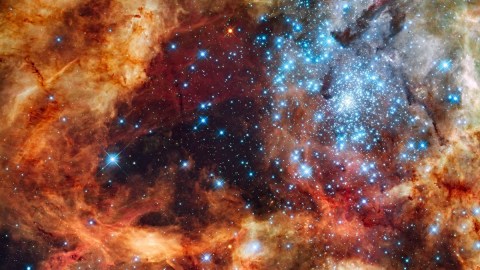
Including the most massive star ever discovered in the Universe.
“The night has a thousand eyes, and the day but one;
Yet the light of the bright world dies with the dying sun.”
–Francis William Bourdillon
When giant clouds of neutral, cool, molecular gas collapse, they give rise to new stars, with the largest ones containing enough gas to birth many millions of them.
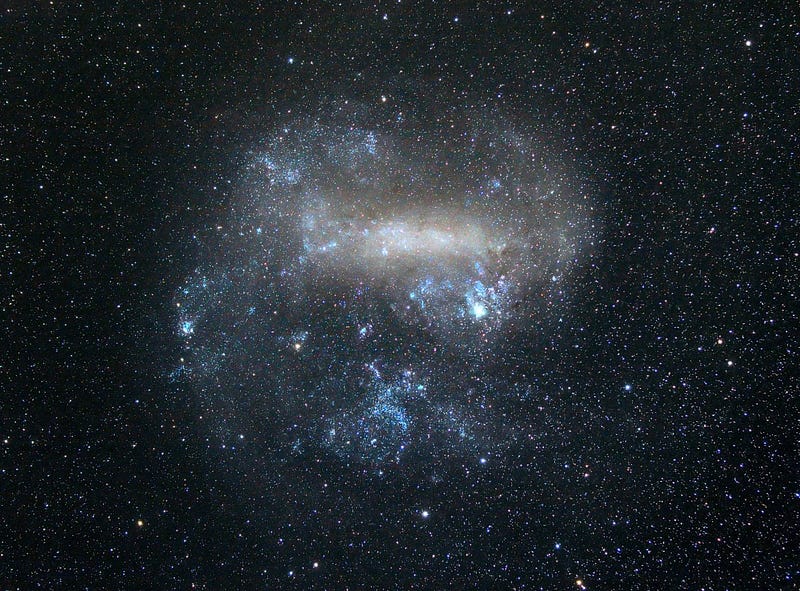
The vast majority of the newborns are low in mass, with 95% of them no bigger than our Sun. But a significant number are more massive, hotter, brighter and bluer.
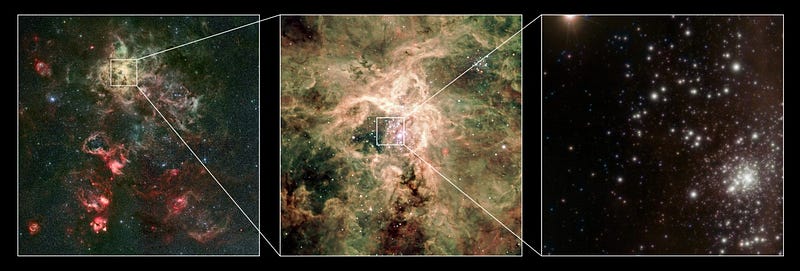
The largest such cluster is 30 Doradus in the heart of the Tarantula Nebula, some 170,000 light years away in the Large Magellanic Cloud. This satellite galaxy undergoes tidal disruption from our galaxy, triggering star formation.
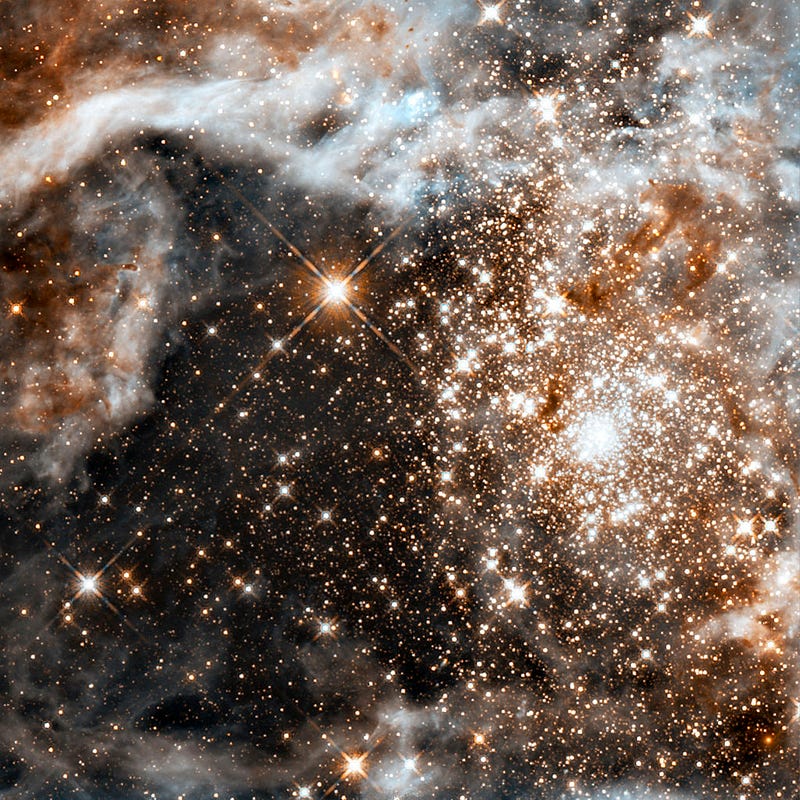
Inside are millions of infant stars, including thousands of short-lived behemoths. While they compose less than 1% of the total stars by number, they account for nearly 10% of the mass.
At the heart of 30 Doradus lies the concentrated star cluster R136, containing the most massive stars ever discovered.
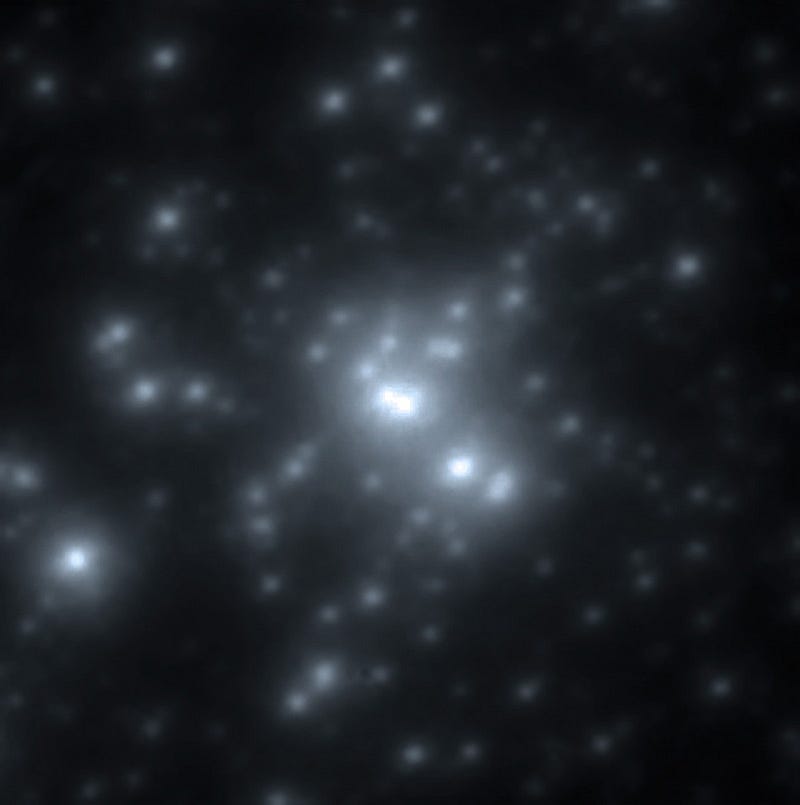
The single greatest is R136a1: 250 times our Sun’s mass. Nine total stars over 100 solar masses, as well as dozens over 50, are found inside.
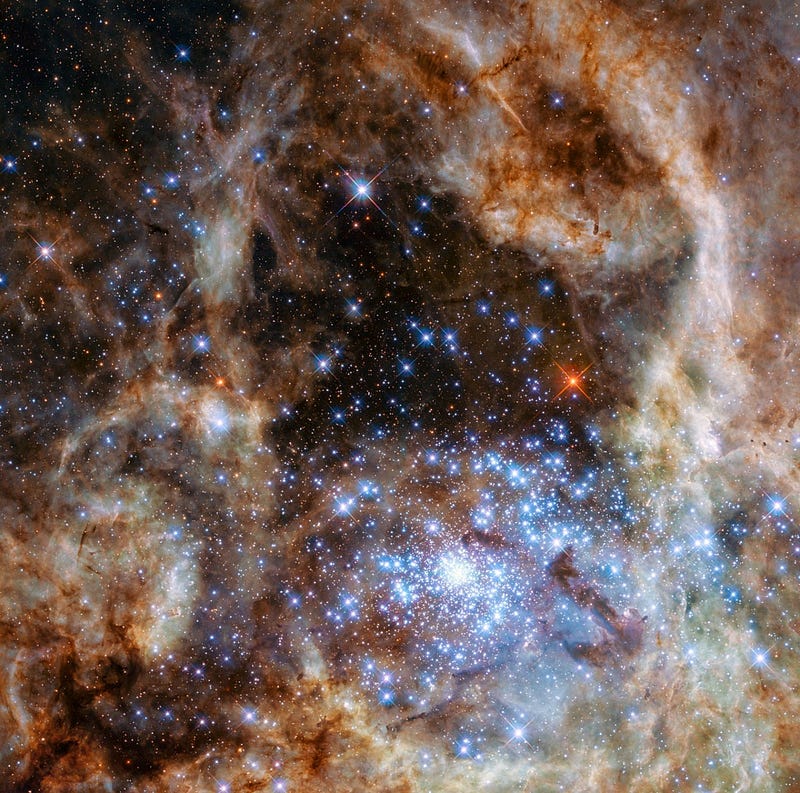
These nine largest stars, combined, outshine the Sun by 30,000,000 times. All will die in catastrophic supernovae, creating massive black holes when they do.
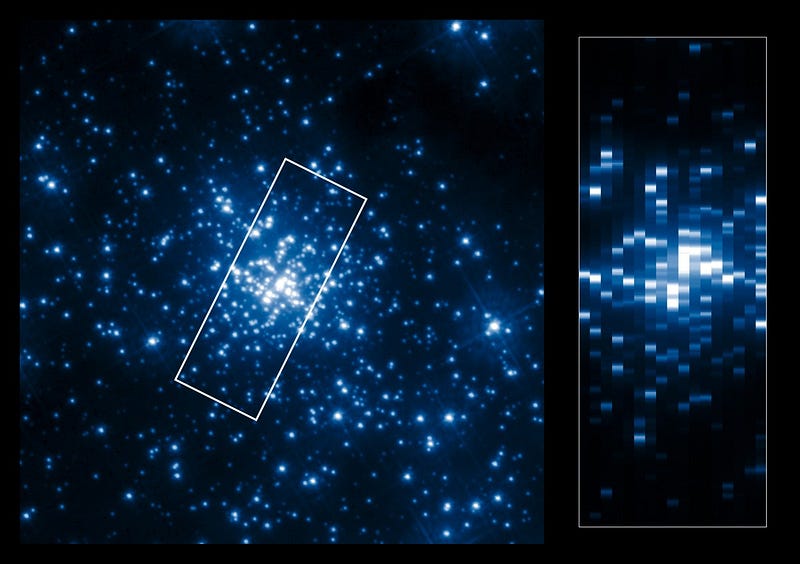
Mostly Mute Monday tells the story of a single astronomical phenomenon or object in pictures and other visuals, with no more than 200 words of text.
This post first appeared at Forbes. Leave your comments on our forum, check out our first book: Beyond The Galaxy, and support our Patreon campaign!





